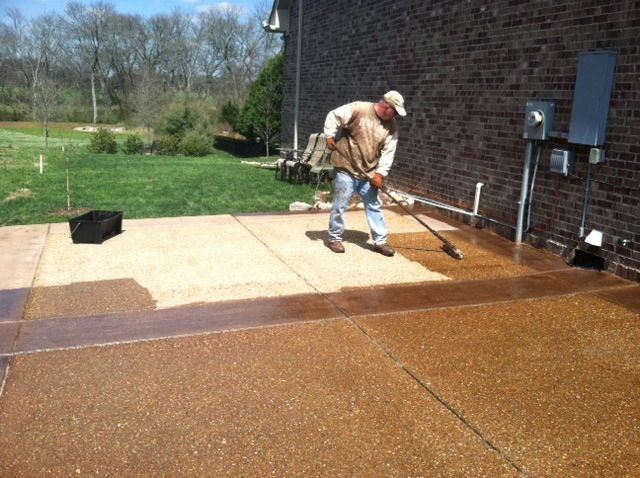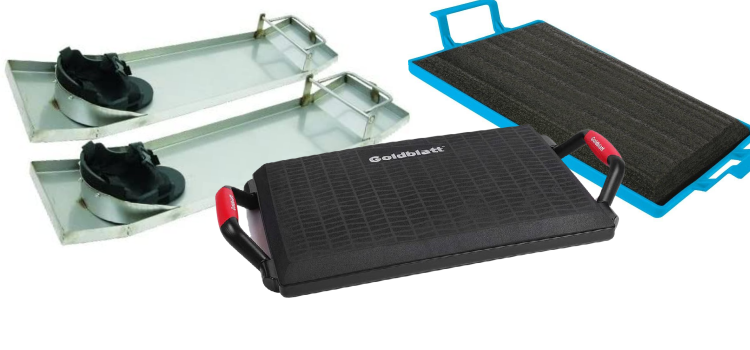Concrete doesn’t just have to be sturdy; it can also be stunning. Enter exposed aggregate concrete—the perfect blend of ruggedness and beauty, often chosen for driveways, patios, and walkways. However, as time passes, the elements can take a toll on its intricate patterns. That’s where exposed aggregate concrete sealer steps in, not just for aesthetics but for long-term protection.
Highly Recommended Exposed Aggregate Concrete Sealer

- Armor AR350 is available in (3) formulations: 700 VOC, 350 VOC, and 50 VOC. Please see the VOC information in the listing before selecting your choice.
- Will enhance dull and faded surfaces with a low gloss wet look. It will darken the surface to make it look wet.
- UV resistant, non-yellowing, and breathable. It won’t trap moisture below the surface and will allow the substrate to properly breathe.
- Can last for up to 1-3 years before the need to recoat.
The Dual Role of Exposed Aggregate Concrete Sealer

Exposed aggregate concrete sealer is more than just a cosmetic addition; it’s a vital investment in preserving both the beauty and longevity of your outdoor surfaces. Acting as a shield, this protective layer offers a robust defense against the detrimental effects of sunlight, rain, chemicals, and oil spills.
Beyond preserving, it has the unique ability to accentuate the natural sparkle of exposed stones, transforming ordinary concrete into a focal point.
Choosing between durability and appearance is a personal decision, but the importance lies in selecting a sealer tailored to your specific needs. Not all sealers are created equal, and factors such as how it adheres to the concrete, repels water, or resists stains play a crucial role in determining the durability and presentation of your surfaces.
In my perspective, a well-sealed aggregate surface isn’t just a practical choice; it’s an investment in your property’s aesthetics and overall value. Understanding the ‘why’ behind the sealer equips you to make an informed choice in selecting the perfect one for your concrete.
Why Use Exposed Aggregate Concrete Sealer?

Let’s delve into why an exposed aggregate concrete sealer is more than just a frivolous purchase—it’s a crucial investment in your property’s appearance. This protective layer goes beyond aesthetics, preserving the vibrant, pebbled texture of your walkways, driveways, or patios.
Main Reasons To Use Exposed Aggregate Concrete Sealer
- Enhances the durability of the concrete
- Elevates aesthetic appeal and curb attractiveness
- Contributes to the increased value of your residence
- Mitigates spalling, flaking, and cracking
- Provides safeguarding against oil spills and various stains, including organic substances
- Demonstrates resistance to mold and mildew
Discover the essential protections offered against harsh weather and environmental factors. From scorching summer sun to icy winter conditions, a sealer acts as a barrier, significantly reducing surface damage and wear. But it’s not merely about defense; it’s also about enhancement. A good sealer amplifies the natural elegance of your exposed aggregate concrete, ensuring it remains eye-catching for years.
Additionally, the ease of cleaning is a defining aspect of why you’ll want a sealer. With the protective layer, spills, dirt, and grime become manageable, requiring just a simple washdown to maintain immaculate spaces. If longevity is your priority, sealing helps extend the life of your concrete, protecting your investment and avoiding potentially costly repairs. Sustainability, in this context, is about making smart choices that save time and money in the long run.
The Best Exposed Aggregate Concrete Sealer

Choosing the right exposed aggregate concrete sealer is pivotal for both longevity and aesthetic appeal. The market offers various types, including topical sealers forming a protective layer, penetrating sealers blocking moisture, and specialized sealers enhancing color. Each type provides distinct benefits in terms of protection, durability, and appearance enhancement.
Key criteria for an optimal sealer encompass resistance to UV rays, water and oil-based stain repellency, non-yellowing properties, and overall wear resistance. Durability is crucial, and an effective sealer should last a few years before reapplication. For an economical yet effective choice, align your selection with your performance and maintenance expectations.
Personally, I’ve found epoxy and acrylic sealers appealing for their glossy finish and UV stability. However, in freeze-thaw climates, a silane or siloxane-based sealer might be more suitable due to its penetrating qualities and protection against water and salt damage. Staying informed about the latest advancements in the concrete sealer industry empowers you to make an informed choice.
Types of Exposed Aggregate Concrete Sealers: A Quick Overview
- Topical Sealers: Form a protective layer on the surface.
- Penetrating Sealers: Absorb into the concrete to block moisture.
- Specialized Sealers: Enhance color and offer specific benefits.
Prepping Your Concrete For Sealant: Key Steps for Seamless Application

Before sealing your exposed aggregate concrete, essential preparation steps ensure a lasting bond. Start with a thorough cleaning, removing dirt, grease, and contaminants with a pressure washer or specialized concrete cleaner for tougher stains.
Address any cracks or damage using a compatible concrete patching compound, ensuring a smooth surface for uniform sealer application. Test for moisture content by sealing a small plastic sheet to the surface for 24 hours and allowing additional drying time if condensation occurs.
Ensure you have all necessary materials on hand, including your chosen sealer, a quality roller or sprayer for application, protective gear, and any cleaning or repair products identified earlier. With a clean, repaired, and fully dry surface, the main event—applying the sealer—becomes a professional-looking process that promises lasting results.
Conclusion
In wrapping up our exploration of exposed aggregate concrete sealers, the importance of selecting the right one is evident. A quality sealer not only enhances curb appeal but also provides robust protection against the elements. Remember, sealing is an ongoing process; regular check-ups and reapplications ensure the longevity of your concrete’s pristine condition.
Choosing a sealer with proven performance, meticulous surface preparation, and professional application pay dividends in protecting your investment. It’s about relishing the fact that your outdoor spaces not only look fantastic but also stand the test of time. While adjustments can be made down the road, starting with the best practices discussed ensures a solid foundation for the enduring beauty of your exposed aggregate concrete, come rain or shine.
Should you have questions or seek additional guidance, I’m here to help you navigate the multitude of options. Together, we can ensure your outdoor concrete spaces continue to impress for years to come.






